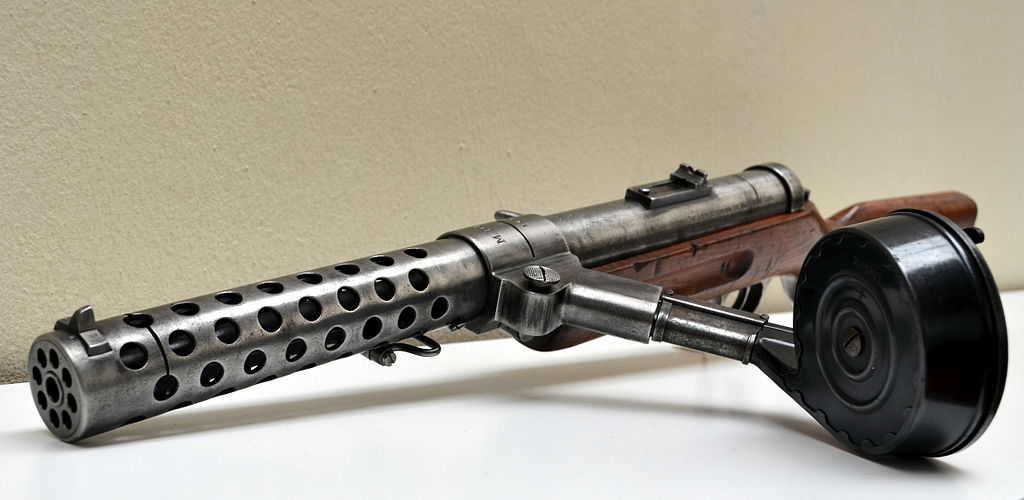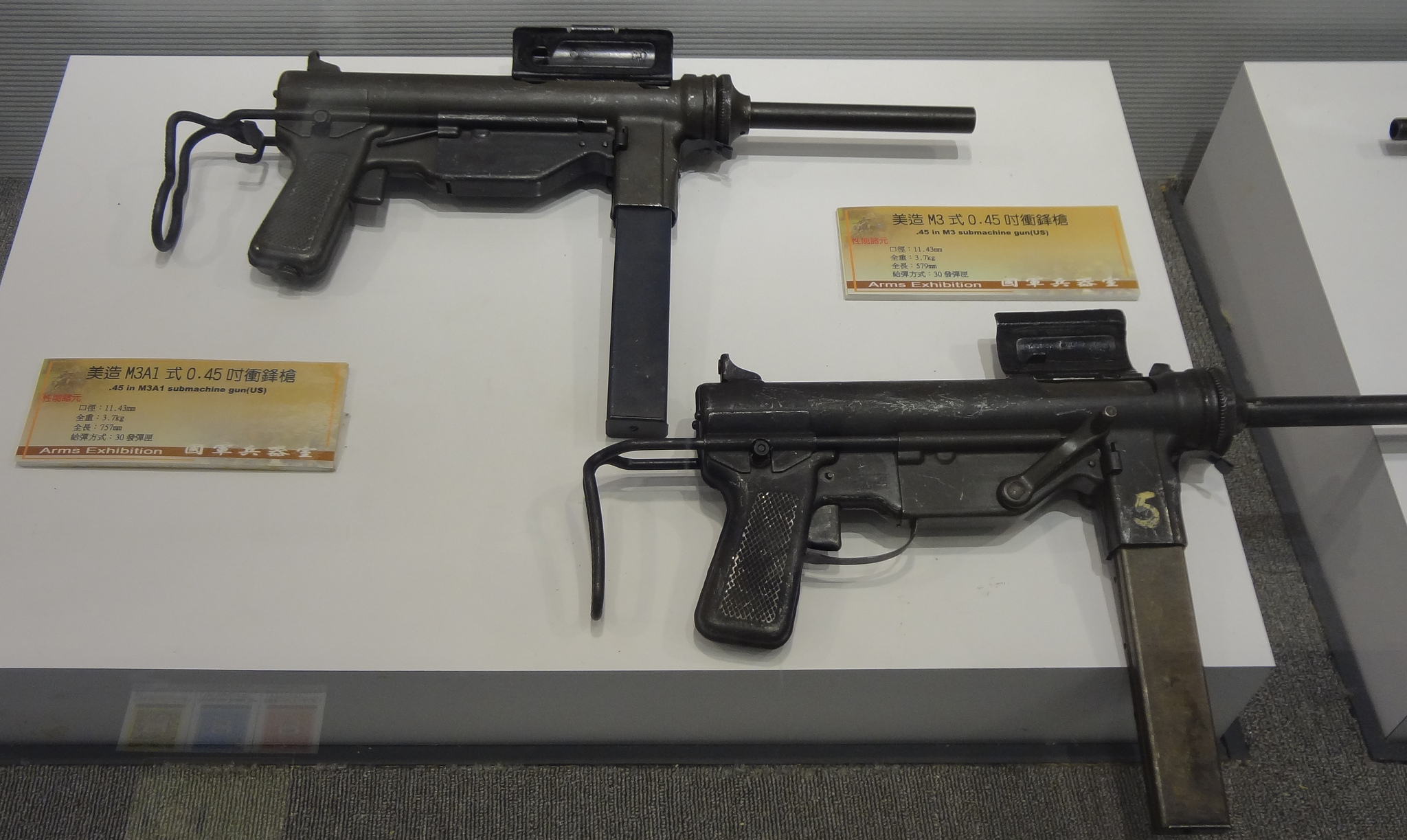History of the Thompson Sub Machine Gun
Jeff Williamson 08.02.18

World War I was the mother of invention in the face of obsolete tactics. Cavalry and bayonet charges were cut down by the machine gun. Accurate rifle fire too slid to a secondary priority in the face of suppressive fire. Through it all, the average infantryman was equipped with a long barreled, bolt action rifle. Good for hitting targets up to 600 yards or more away, it was a detriment and little more than a bayonet mount at close range.
The age of the storming – or assault – tactics started coming into play, and new technology was necessary to affect them.
When the American “Doughboys” arrived in the trenches of France, assault tactics had already been defined by almost four years of brutal slaughter. There was a learning curve as the Yanks attempted the old tactics of the bayonet charge into a hail of entrenched German Maxim guns. Smart officers quickly adapted their troops’ methods and learned from their allies, albeit grudgingly.
A weapon for storming the tranches and clearing them of enemy combatants was needed. The American Browning Automatic Rifle (BAR) was yet to be issued in wide numbers and both it and the questionably reliable French Chauchat were too large and cumbersome to effectively use in confined trenches, not to mention heavy with the accompanying ammo necessary to remain in action for very long. US troops were quick to adopt an old school idea: the shotgun, which was met with some objections from the enemy claiming it violated the Geneva Convention – accusations that had been flying at all combatants almost as often as artillery rounds.

The Germans were the first to develop a reasonably reliable tool in what became known as a new class of firearm: the submachine gun in the form of the Bergmann M18. The idea of a single soldier armed with a fully automatic weapon was resisted by many old school officers as a waste of ammo. These were men raised in the idea of having their soldiers unload their rifles before a charge to discourage stopping to fire which could slow the pace of the wave of soldiers meant to wash over the enemy. These were the officers who suffered high casualties within their units and all too soon had no men to lead.
During the war, American General John T. Thompson originally envisioned a semi-automatic rifle for infantrymen to replace the bolt action Springfield 1903. In 1916 he founded the Auto Ordnance company. Thompson also was aware of the horrendous conditions in war and wanted to avoid any complicated recoil or gas operated mechanisms for reliability and simplicity in the field. He explored the Blish principle relying on friction. The only round in production that could cycle such an action was the .45 ACP. The first prototypes, pastorally called the Annihilator, were scheduled to ship to the Western Front on November 13, 1918. However, the Armistice went into effect two days before.
In 1919, the company decided to rename the gun the Thompson Sub Machine Gun and offer it for sale to civilians (obviously before the NFA), with the first production model being the M 1921. Initially offered with 20 round stick magazines, a 50 round and ultimately a 100 round drum mag were made available.
A large price tag, however, inhibited sales, though a few federal agencies (the USMC and …US Postal Service) purchased the model for close range, point defense work. These few domestic sales helped sponsor purchases by other governments, especially in South America and the Irish Republican Army. These limited deployments provided further suggestions for next model improvements. In 1926, a Cutts compensator variant was offered to help control muzzle climb on full automatic fire.
In 1928 Federal Laboratories took over from Auto Ordnance with their own production of the M1928. Early the following year, in a conflict between Chicago’s Italian Southside Gang and the Irish Northside Gang, came the most infamous use of the “Tommy gun.” The Saint Valentine’s Day Massacre, on February 14, 1929 was an attempt to eliminate the Northside leadership, particularly George “Bugs” Moran. It failed in that, but it did kill seven individuals, at least one of whom was not even a gang member. When these victims were lined up against a wall in a fake police raid and gunned down with two Thompsons – as well as at least one shotgun – it created a public outcry. It was an event that helped the Federal government push through the National Firearms Act of 1934 which heavily restricted the private possession of fully automatic firearms. Southside Gang leader Alphonse “Al” Capone was suspected of orchestrating the killing but was never tried or convicted of it.
Despite of, or perhaps because of the Thompson’s notoriety, in 1933 the FBI equipped its agents with the gun after the Kansas City Massacre, where agents were ambushed while transferring escaped convict Frank “Jelly” Nash. The use of the gun by other gangs, as well as Mid-West bank robbers like John Dillinger, made it a symbol of the escalation between law breakers and law enforcers. Eventually, however, the age of the gangster, through rigorous enforcement and prosecution with the restriction of sub machineguns being widely available came, led to a change in tactics. Quite simply, robbing banks and shooting up streets was bad for business as it led to public disapproval. Of course, the repeal of Prohibition probably helped too.
In 1938 the US Army adopted the Thompson in two primary variants. The first was the 1928 a1, which was little different from the models available thus far and capable of accepting both stick and drum magazines. The other, and more prolific was the models M1 and M1A which had a simpler rear sight, only accepted the box mags and the charging handle was moved from the top to the right-hand side. It was marginally lighter too.
In military service, the Thompson was issued to squad leaders as well as special ops such as Rangers. It was not an effective range weapon, but neither were any of the sub machineguns issued by any of the combatant nations. The primary difference was that the Thompson fired the .45acp while the 9mm Luger was more common for service smgs. Other complaints were against its weight – the M1928 weighed just under 11 pounds without the bullets while the M1 was about a pound lighter – and its rapidly declining accuracy outside of 50 yards. Further, while the use of the .45acp undoubtedly aided American logistics, the caliber had its limitations. At close range and against soft targets it was devastating, but the .45 acp round was a slow mover and frequently failed to fully penetrate even thin trees. This became an issue in the island-hopping campaigns of the Pacific theatre.
The Thompson was expensive too, both in time and materials, so a replacement was sought in World War II. The M3 “Grease Gun” was the adopted replacement but design modifications and manufacturing issues delayed its full deployment, keeping military orders for the M1 Thompsons going until almost the end of the war.

After the war, the Thompson slid from frontline issue to surplus offered to allies in the cold war. There were simply more efficient firearms offered, first in the form of the M3 and ultimately with the adoption of the M16 which did the same thing faster, lighter and cheaper than anything else.
Nevertheless, despite it being heavy and incapable of penetrating medium cover the Thompson Sub machine gun was an integral part of American firearms development – too late for use in World War I, more than 1.75 million of them served in World War II and after. It remains an iconic emblem of America both in war and in the time leading up to it in the age of Prohibition – the effectiveness of which made more powerful by Hollywood in general and by actor Tom Hanks specifically in 1998’s Saving Private Ryan and in 2002’s Road to Perdition. . . perhaps it is better known now as the ‘Tommy Hanks Submachinegun?’

